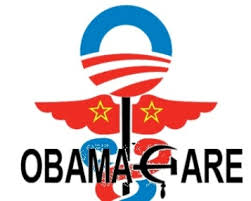 Many choosing to pay penalty rather than enroll
Many choosing to pay penalty rather than enroll
To date, less than 25 percent of all Obamacare enrollees are between the ages of 18 and 34. Why does this matter? To be financially viable, the still-faltering national healthcare plan needs America’s youth to start paying up. Now. If this doesn’t happen, the consequences for Obamacare could be dire.
Robert Zirkelbach, a spokesman for America’s Health Insurance Plans, explains that “the more young, healthy people participating, the more stable the marketplace will be, and the more affordable coverage will be.”
Even former President Bill Clinton agrees with this premise, stating that Obamacare “only works, for example, if young people show up. We’ve got to have them in the pools, because otherwise all these projected low costs cannot be held if older people with preexisting conditions are disproportionately represented in any given state.”
Simply stated, the 18-34 demographic, which tends to be healthier and which tends to use far fewer healthcare services, will to some extent subsidize the cost of care for older, less healthy Obamacare participants. Sound like a good deal to you? Well, maybe. If you happen to need medical care and aren’t a millennial, this age-based “subsidy” might seem fairly appealing. But, read on, non-millennial friends, there is a very unpleasant surprise waiting just outside your door.
 Over time, if millennials don’t jump on the Obamcare bandwagon with cash in hand, everyone’s costs will soar. That’s right, everyone. Millennials overwhelmingly avoiding Obamacare.
Over time, if millennials don’t jump on the Obamcare bandwagon with cash in hand, everyone’s costs will soar. That’s right, everyone. Millennials overwhelmingly avoiding Obamacare.
In a study conducted for the National Center for Public Policy, author and researcher David Hogberg, Ph.D. states that “without the young and healthy, only the older and sicker participate and the price of insurance premiums will increase precipitously.”
Hogberg continues buy explaining that “if the exchanges do not attract a sufficient number of people in the 18-34 age demographic, they will eventually enter an insurance ‘death spiral.’ This occurs when the young and healthy drop out of the ‘insurance pool.’ This leads to ‘adverse selection’ in which insurance is only attractive to those who are generally older and sicker. If the insurance pool is comprised largely of people who are older and sicker, then insurance prices will rise to cover their costs. That rate increase causes even more young and healthy people drop their insurance, leaving the pools even older and sicker than before, and so on. Eventually, all but a few insurers will be forced to discontinue their business on the exchanges because they can no longer make a profit. Fewer insurers means less competition, resulting in even higher insurance premiums.”
 So, let’s recap. As of the end of December 2013, of the nearly 2.2 million people who had enrolled in the new healthcare marketplace, only about 24 percent were between the ages of 18 and 34. Leading this group by a significant margin was the much more costly 55 to 64 year old demographic, which accounted for approximately one-third of all enrollments. Seeing the imbalance?
So, let’s recap. As of the end of December 2013, of the nearly 2.2 million people who had enrolled in the new healthcare marketplace, only about 24 percent were between the ages of 18 and 34. Leading this group by a significant margin was the much more costly 55 to 64 year old demographic, which accounted for approximately one-third of all enrollments. Seeing the imbalance?
Unfortunately for Obamacare, the much-needed 18-34 age group is not just disinterested in the program, it actually faces severe financial disincentives for enrolling.
In his study for the National Center for Public Policy, author David Hogberg reports that “many single people aged 18-34 who do not have children will have a substantial financial incentive to forgo insurance on the exchanges and instead pay the individual mandate penalty of $95 or one percent of income. About 3.7 million of those ages 18-34 will be at least $500 better off if they forgo insurance and pay the penalty. More than 3 million will be $1,000 better off if they go the same route.”
Sounds bad, right? Well, the news doesn’t get better over time. For 2014, the tax penalty for not having health insurance for up to three consecutive months seems fairly manageable – “just” $95 per adult and $47.50 per child, or one percent of taxable income, whichever is greater. But don’t let that seemingly low number fool you. The penalties you pay will start to increase rapidly. In 2015, the flat-rate penalty will more than triple, reaching a much more painful $325, or two percent of income (whichever is greater, of course). And for 2016, that number will more than double again, reaching $695 per adult, or 2.5 percent of income.
The Obama Administration estimates that it will need about 2.7 million 18-30-year-olds to enroll if the exchanges are to work. To date, the combined enrollment of all age groups has reached about 2.2 million people.
About BHM Healthcare Solutions – www.dev.dev.bhmpc.com
BHM is a healthcare management consulting firm whose specialty is optimizing profitability while improving care in a variety of health care settings. BHM has worked both nationally and internationally with managed care organizations, providers, hospitals, and insurers. In addition to this BHM offers a wide breadth of services ranging including healthcare transformation assistance, strategic planning and organizational analysis, accreditation consulting, healthcare financial analysis, physician advisor/peer review, and organizational development.
Contact Us : re*****@*******pc.com, 1-888-831-1171
For a complimentary consultation, please click below:

